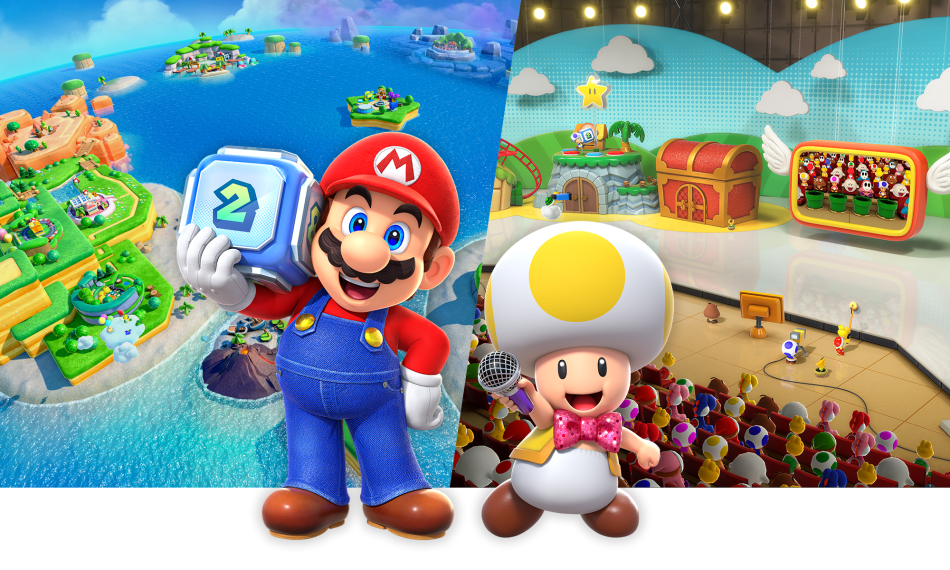Note: This review will be covering Jamboree TV and the specific changes and additions made to the Nintendo Switch 2 Edition of Super Mario Party Jamboree. If you want to know more about the gameplay and our overall impressions of the base game, check out our original review here!
Super Mario Party Jamboree launched last October to critical acclaim, praised as being easily the best new Mario Party of the Switch generation. Seeing as it was released less than a year before the Switch 2 hit store shelves, a new exclusive series entry is likely still a while away. In an attempt to hold us over until then, Super Mario Party Jamboree – Nintendo Switch 2 Edition + Jamboree TV offers an expansion to existing owners of the game for £16.99/$19.99. With new content and game modes that take advantage of the Switch 2’s unique features and accessories, let’s see if Jamboree TV is worth the upgrade.
Every time you open Super Mario Party Jamboree – Nintendo Switch 2 Edition + Jamboree TV, you’ll be prompted to select between either Jamboree TV or the original Switch 1 version of the game. Jamboree TV adds camera play and new optional rulesets to the main Mario Party mode, two brand new modes (Bowser Live and Carnival Coaster), new minigames that use mouse controls, and supports 1440p resolution in docked mode and 1080p when playing in handheld. Unfortunately, none of the side modes in Super Mario Party Jamboree are compatible with this higher resolution, as those can only be accessed through the Switch 1 version. This includes Bowser Kaboom-Squad, Survivathon, Party-Planner Trek, Paratroopa Flight School, Toad’s Item Factory, and Rhythm Kitchen, and the minigames that are tied to those modes are also absent from Free Play in Jamboree TV. Needlessly confusing, I struggle to understand the reason for this, especially when so many other Switch games received free updates that not only increase the resolution, but add HDR support, which is also missing here.
Mario Party
Apart from the resolution bump, which is a noticeable improvement that helps make the visuals pop and appear sharper, the classic Mario Party board game mode within Jamboree TV remains mostly the same as the one in the base game, but with a few fresh additions. 14 new mouse-controlled minigames have been added, where you hold a Joy-Con 2 controller on its side like a mouse. Whether it’s a game of air hockey, lining up dominos, sorting envelopes, guiding toads through an electric maze, bulldozing goombas, or scooping up ice cream, the mouse minigames are intuitive to control (surprisingly even without a table and just using your pant leg) and have the same level of quality and competitive nature we’ve come to expect with Mario Party minigames. For those who prefer to only play with traditional button controls, these minigames can be toggled on/off before starting a game, however, since the toggle is the same as the one for the motion-controlled minigames, you are forced to choose between both mouse and motion or neither. This makes sense, as some of the minigames use both functions, like one where you spray paint Bob-ombs with the mouse and then pick up the Joy-Con 2 to use motion to shake the can to refill it.
Two new rulesets have also been added to give you more ways to play, including Frenzy and Tag-Team. 10 turns used to be the minimum for Mario Party, but Frenzy Rules shortens the game even further by starting as if in the homestretch, meaning you’ll only have 5 turns to win. To further add to the fast-paced chaos, twice the amount of special events can appear on the board (including 2 stars at once), and each player starts off with 50 coins, 1 star, and the Double Dice item. As for Tag-Team Rules, it’s a 2v2 team battle where you share stars, coins, and items with your teammate. Jamboree Buddies are absent with Tag-Team Rules, being replaced with the Rally Space, which warps your teammate to you, as well as the Together Dice item, sold at shops during the second half of the game, which also brings your teammate to your space, but has you each roll one dice and then move the total amount together. Both the Frenzy and Tag-Team rules feel like natural inclusions that probably should have been in Super Mario Party Jamboree from the beginning, but showing up to a party is better late than never.
The last big new addition to Mario Party is GameShare, which allows you to play locally on multiple Nintendo Switch systems (including Switch OG, Switch OLED, Switch Lite, and Switch 2) with just one copy of the game. However, playing this way is limited, as only Party Rules, the board Mega Wiggler’s Tree Party, and 30 minigames are accessible when using GameShare.
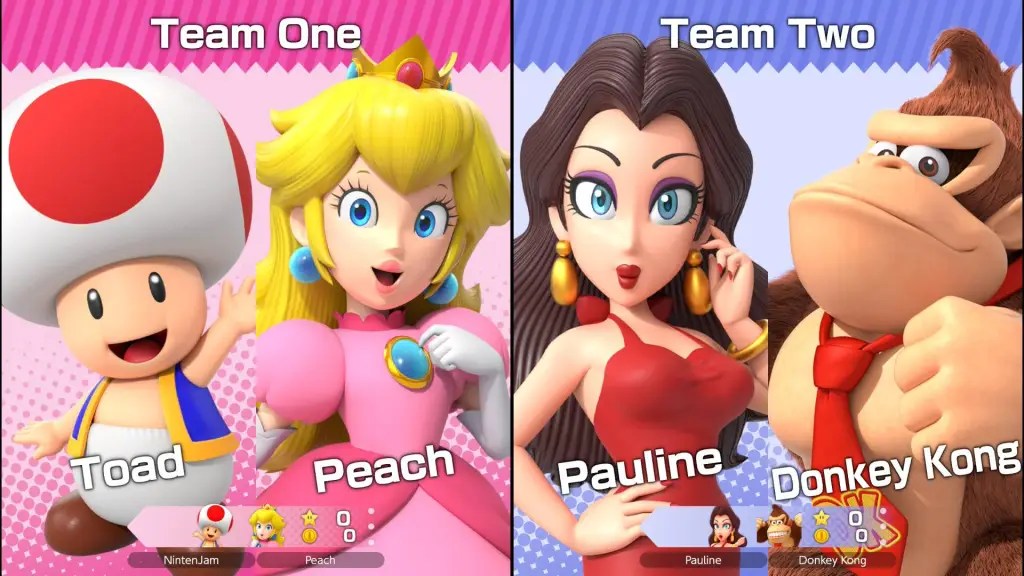
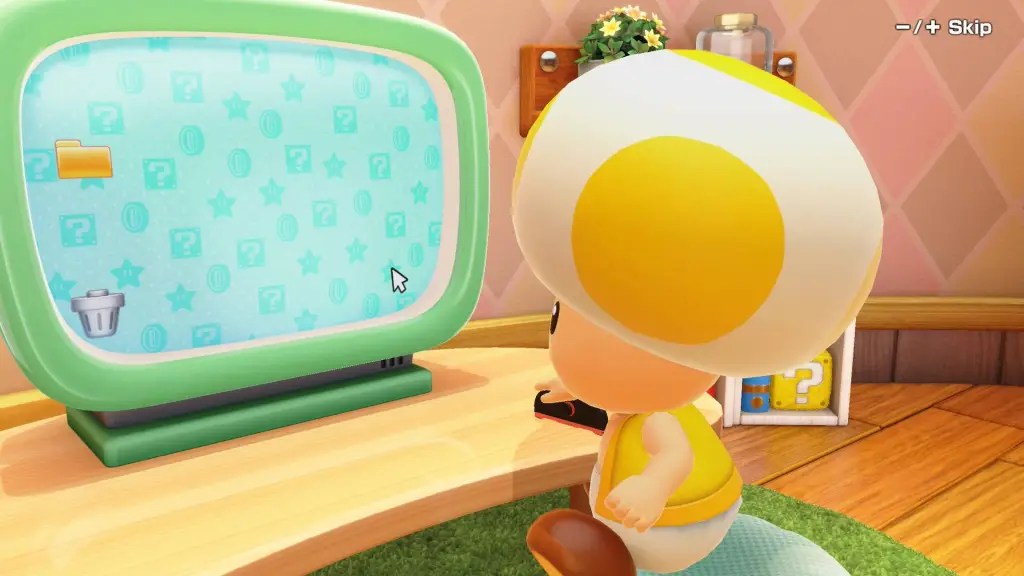
CameraPlay
Using a compatible USB-C camera*, such as the official Nintendo Switch 2 Camera that was used for the purpose of this review, you can now put yourself directly into Mario Party using CameraPlay. Appearing in a small circular window that hovers above your character and next to your username (or in the corner so it’s out of the way, depending on the minigame), this feature doesn’t have any gameplay function, but instead is used to see the reactions of your friends and family. When playing locally, set-up has you manually crop and zoom onto each player’s face depending on their location in front of the camera, and the background can optionally be chroma keyed out (to varying accuracy depending on lighting and other external factors). Since most living areas have the couch at a respectable distance away from the TV, a 1080p camera just doesn’t quite cut it, and the zoom-in (especially during close-ups, like when you get a star) can make faces appear pixelated. CameraPlay is more intended to be used online, when the camera is closer to you, and you can’t just turn your head to see the faces of players in real life. In this scenario, it’s a cute novelty that certainly holds value, as long as you know someone that owns the game.
*Screenshots are disabled on Switch 2 while the camera is being used.
Bowser Live
Despite being the mode that Nintendo has been pushing the most, Bowser Live is easily the weakest link of Jamboree TV. Splitting into two teams of two, with different coloured Toads as CPUs if you don’t have enough players, Bowser Live is a best-of-three competition where you play either camera or microphone-based minigames (you select between one or the other at the start, so if you don’t have a USB-C camera, you can still play the latter with the microphone that’s built into the Switch 2). The biggest issue with Bowser Live is the severe lack of minigames, as there are only three of each. The minigames you play in the first two rounds are ‘randomized’ (I use that term lightly because, like I said, there are only three possible outcomes) and the final round is always the same, to see which team can move around the most and/or make the most noise to fill a metre.
A full round of Bowser Live only takes about 5 minutes, and after playing it a few times, you’ve already experienced everything the mode has to offer. Each of the minigames are entertaining enough the first time, but get stale very quickly, leaving no desire to go back and replay them. The microphone-based minigames use audio cues as the controller, consisting of clapping to the beat, yelling to move a toy car as far as possible without reaching Bowser, or moving Bowser Jr.’s Clown Car up and down to collect a path of coins. As for the camera-based minigames, those have you using your body as the controller: either hitting a ‘?’ block to collect as many coins as possible, balancing Goombas on your head, or playing Simon Says with a Wonder Flower where you have to either squat or stand. Weirdly enough, only the microphone-based minigames can be played separately in Free Play (which is like Minigame Bay without the extra side-modes), not any of the camera-based ones.
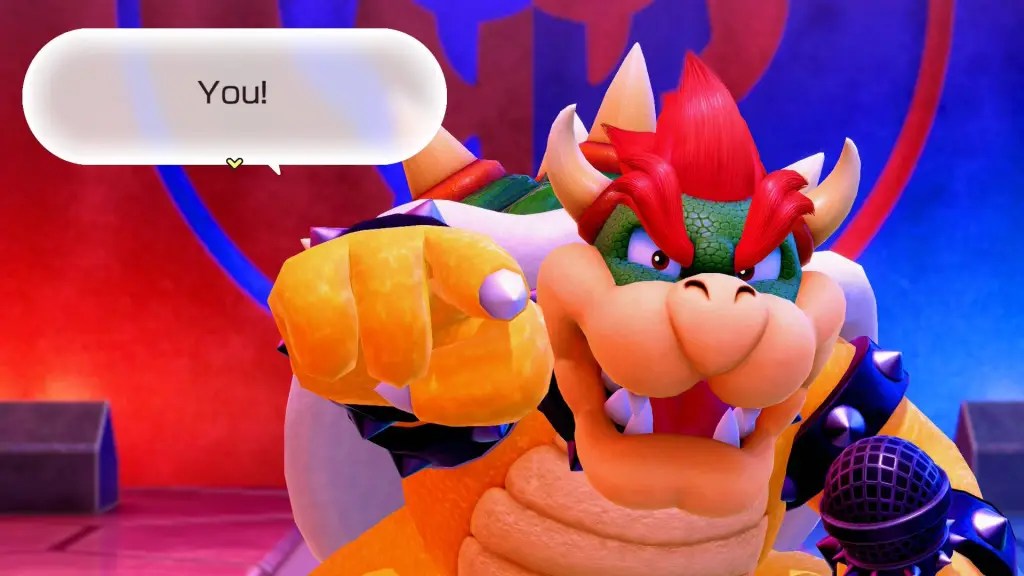

Carnival Coaster
Carnival Coaster is the dedicated mode for playing the new mouse-controlled minigames, but instead of competing against other players like in Mario Party, the rules of the minigames are adjusted to support 2-player co-op. As mentioned earlier, most of the mouse minigames are a really good time, and the co-op versions of them are no different, making this by far the best new mode. There are five available coasters to ride (Volcano Coaster, Sky-High Coaster, Carnival Coaster, Haunted Coaster, and Trial Coaster) and the goal is to get to the end of the coaster before time runs out. A Wonder Flower sits on the front of the coaster car and gives little quips as you ride, and although this can get repetitive, its voice can be turned off in the main menu.
Each player uses the Joy-Con 2 as a mouse to control their own cursor to shoot balls at enemies along the automated track (with HD Rumble 2 for immersion), and defeating them adds a bit of extra time to the clock. More time can also be added by putting your hands in the air while going downhill, and most importantly, performing well in the minigames that occur when you enter a warp pipe. How many seconds of bonus time you earn from a minigame depends on how high you rank (S-rank +25, A-rank +20, B-rank +15, and C-rank +0). If you manage to make it to the end of the coaster, a total will be given that tallies up the points from each minigame and how much time you had left, adding a replayability factor to shoot for a high score. How many enemies each player defeated is also counted, creating for some friendly competition in an otherwise cooperative mode.
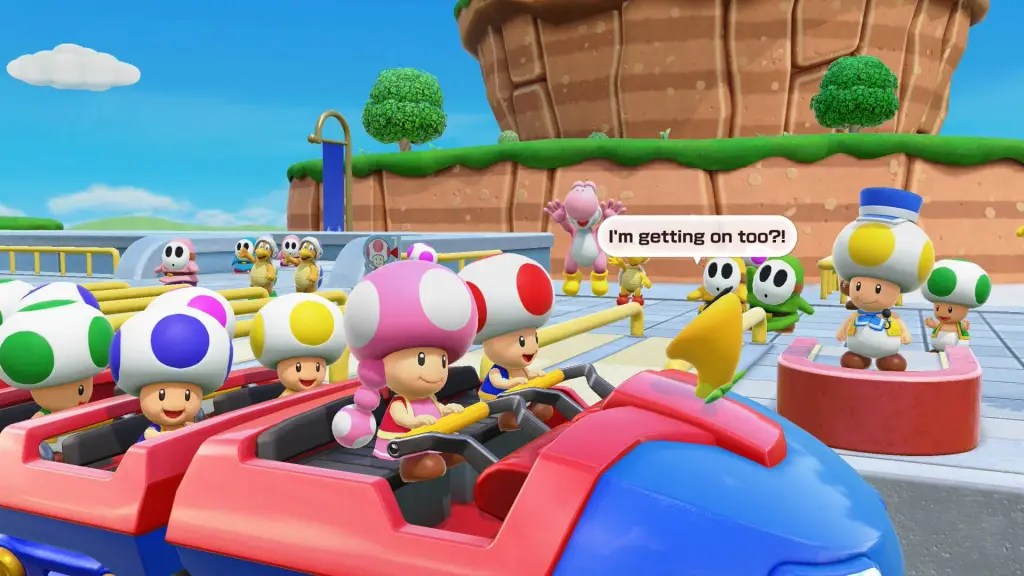
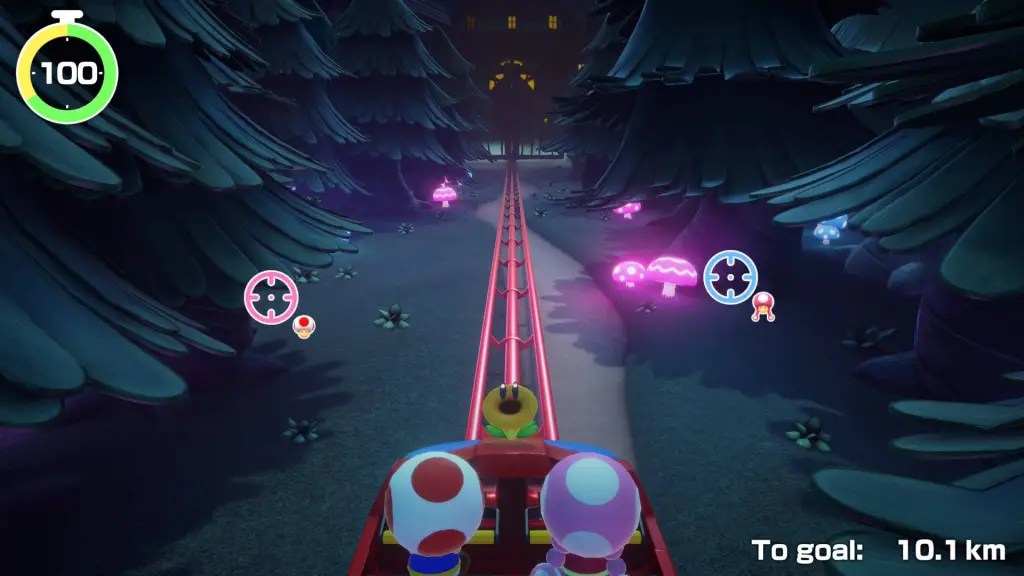
Final Thoughts
While the base game of Super Mario Party Jamboree remains a must-have, the Jamboree TV expansion for Switch 2 is take it or leave it. For the price, the new Carnival Coaster mode and mouse minigames are a fun time, and the new rulesets for Mario Party are a welcome inclusion. Alas, Bowser Live struggles to make good use of the camera and microphone, CameraPlay is only worth it if you have friends or family to play with online, and the increased resolution is not supported with any of the original side modes. Just one new game board would have added so much value, but Jamboree TV doesn’t even have that.
6/10
A copy of Super Mario Party Jamboree – Nintendo Switch 2 Edition + Jamboree TV for review purposes was provided by Nintendo UK.
